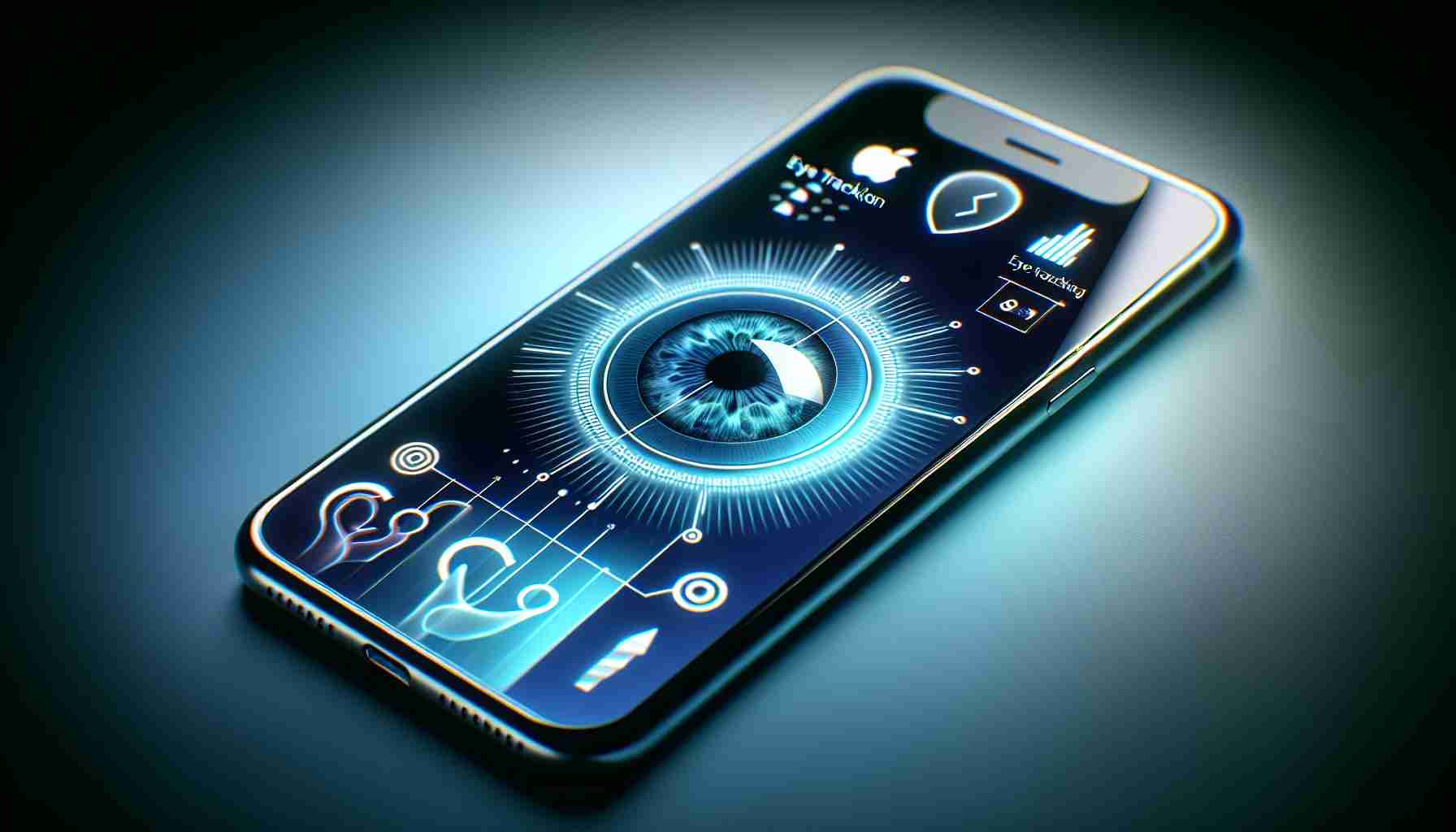Revolutionizing Accessibility with Apple’s Eye Tracking Innovation
The latest software update from Apple, iOS 18, introduces a groundbreaking feature that enhances accessibility for iPhone and iPad users – Eye Tracking technology. This feature is ingeniously integrated into the Apple Vision Pro suite, providing a hands-free method to navigate and interact with small screens.
Eye Tracking enables the device to discern where the user is gazing on the screen without any additional hardware, relying solely on the front-facing camera combined with intelligent on-device machine learning algorithms.
Quick and Easy Set-Up to Empower Users
Activating Eye Tracking is seamless and takes merely a minute through the Accessibility settings. It begins with a simple calibration process where users follow a dot across the screen, aiding the device to learn their unique eye movements.
Once calibrated, a floating black dot appears, mirroring the user’s gaze, effectively substituting the need for physical touch interactions. This pointer becomes a powerful tool, especially for those with physical disabilities, enabling them to navigate their device with just their eyes.
Enhanced Control for Precision and Ease
With the Eye Tracking feature, a setting known as Dwell Control gets enabled. This allows users to execute selections by simply maintaining a steady gaze at screen elements. It also includes customizable settings for those who want to adjust the sensitivity or disable Dwell Control entirely.
Further refinements like Snap to Item assist in effortlessly selecting user interface elements by magnetizing the pointer toward the nearest actionable item, reducing the precision required for making selections.
Despite still being in its testing phase, the feature holds significant potential for providing users with mobility limitations a more inclusive and empowering way to use their Apple devices. If used in ideal conditions, positioned at the correct distance and with minimal head or device movement, this technology indicates a promising future in enhancing accessibility for everyone.
Eye Tracking Technology in the Broader Context
Eye tracking as an assistive technology isn’t entirely new. It has been available in some form on personal computers and specialized devices for several years, aiding individuals with disabilities, such as ALS or spinal cord injuries, to communicate and interact with devices. The implementation of eye-tracking technology on a popular mobile operating system like iOS broadens the potential user base and marks a significant step in mainstream accessibility technologies.
Furthermore, eye tracking could have applications beyond accessibility, such as in psychological research to study attention, in marketing to understand consumer behavior, and in gaming for a more immersive experience.
Frequently Asked Questions and Answers
What are the main challenges associated with Eye Tracking technology?
The challenges include ensuring accurate tracking in various lighting conditions, accommodating a wide range of individual differences in eye physiology, and safeguarding user privacy when interpreting sensitive eye-tracking data.
Are there any controversies surrounding Eye Tracking?
Some concerns revolve around privacy, as eye tracking can potentially reveal a great deal about a person’s intentions, health, and preferences. Ensuring that this data is protected and not misused is critical.
Advantages and Disadvantages of Eye Tracking in iOS 18
Advantages:
– Provides an alternative mode of interaction for users with physical disabilities.
– Could enhance user experience by offering a hands-free option for certain tasks.
– Opens possibilities for new applications and features that leverage eye movements.
Disadvantages:
– May require calibration and adjustments to work accurately for each user.
– Could be less effective in environments with variable lighting or other visual distractions.
– The privacy implications of tracking eye movements.
Suggested Related Links
For more information, you can visit the following related main domains:
– Apple
Please note that for the most up-to-date and detailed information regarding Apple’s accessibility features and their implementation, you should refer directly to Apple’s official resources.
